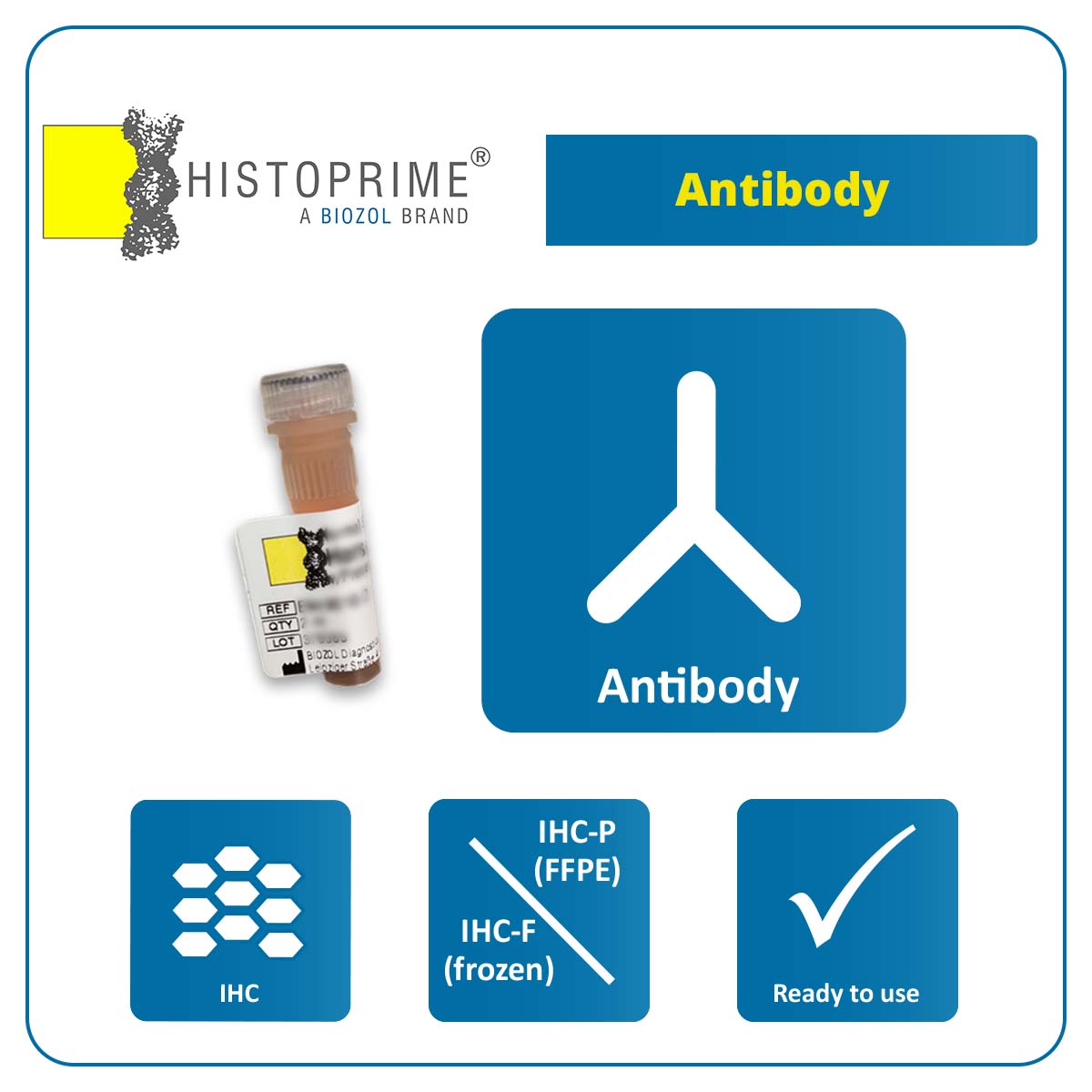Mouse anti-Human p53 (unconjugated), Clone DO-7, IgG2b, Ready-to-use
Ready-to-use Antibody for Immunohistochemistry
Background
The p53 tumor suppressor gene is one of the most frequently altered genes in malignant tumors of human tissues. P53 is a transcription factor that regulates cell growth and prevents cells from entering the S phase of mitosis. The p53 oncoprotein is expressed at very low levels in normal cells. However, common point mutations on chromosome 17 can lead to accumulation of the mutant phosphoprotein. The expression product of the mutant gene no longer has binding ability for DNA and thus no suppressor activity.
The p53 protein is expressed in a large number of different carcinomas. For colorectal carcinomas with a high expression rate, a study on formaldehyde-fixed material after treatment with “Target Unmasking Fluid” showed a sensitivity of 67% and a specificity of 90% for immunohistochemical detection with clone DO-7 (corresponding to E052) (Baas et al., 1994).
| Specificity | p53 |
|---|---|
| Species Reactivity | Bovine, Human |
| Host / Source | Mouse |
| Isotype | IgG2b |
| Application | IHC-F, IHC-P |
| Clone | DO-7 |
| Antigen | Human p53 |
| Quantity | 5 ml |
| Format | RTU |
| Storage Temperature | 2-8 °C |
| Shipping Temperature | 20 °C |

